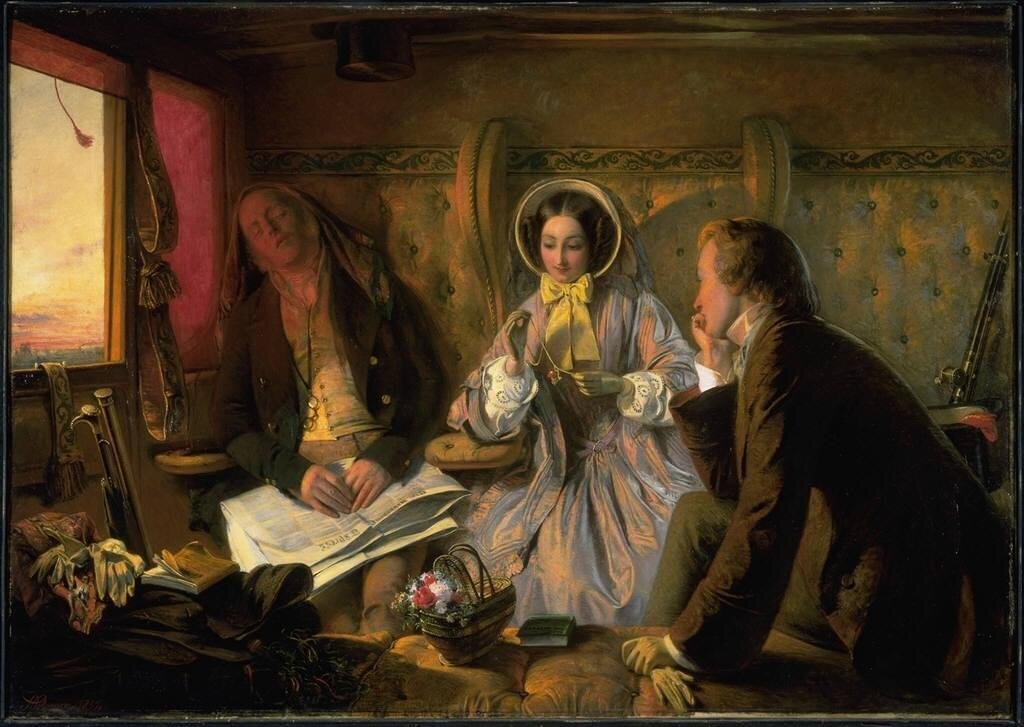http://www.mhs.mb.ca/docs/sites/dalnavert.shtml
Dalnavert as a boarding house in 1959.
Before 61 Carlton Street became Dalnavert Museum, it spent nearly forty years as a rooming house. According to a 2012 interview with Gabriel Boucher, who spent ages 9-17 living at 61 Carlton part time, his grandparents Eugene and Olivine Rouillard bought the house in 1939. That was ten years after the home’s last remaining occupant, Lady Agnes Macdonald, had moved out. Boucher believed that his grandparents bought it from the Macdonald estate, though according to a tour guide manual from 2000, “[t]he estate sold the house to the Royal Trust Company”. Boucher described it as a ‘dump’, which cost twice as much to renovate as it did to buy. Little is known about the house during the period before it was sold. It may have sat empty, or it may even have been for sale all that time. Things may have moved slowly due to Lady Macdonald’s health. We know that at one time, the parlour was operated as a dance hall. According to one story, a real estate agent once attempted to cheat a demolitions company by selling them the property, only for them to realize that he had no right to do so!
61 Carlton’s time as a rooming house has been explored by historians less than its time as an affluent family’s home. This neglects the experience of the people who lived there during that period, a group which makes up the bulk of those who have ever called the house home. In this respect, the rooming house residents have something in common with the servants of the Macdonald’s period. While on the surface a testament to the lives of the rich and privileged, the house has far more history housing far less wealthy people.
That said, there remain some records from the rooming period, including newspapers, documents from the building restoration in the 1970s, and Boucher’s testimony. For example, Boucher recalls that his grandparents thought the house may have been “of ill-repute” when they bought it, but during the rooming house period, its reputation seems to have recovered. While the Historical Buildings Committee refers to 61 Carlton as “a boarding house for fashionable women”, Boucher remembers a more eclectic demographic, though he confirms that most were women. Surviving newspaper advertisements reference a man offering piano lessons from the home, and the Imperial Order Daughters of the Empire held meetings from the house. This would have been considered respectable and reflects the house’s then standing.
Regardless, the home’s subsection into approximately 17 units speaks to a steep decline in status since its days as Dalnavert. Before the Rouillards bought the house, there were already rumors of demolition. Subdivision was not an uncommon fate for big houses at that time. According to a 1980 report by the Historical Buildings Committee, “many of the [area’s] handsome structures were themselves divided and their rooms rented”.
At the time of 61 Carlton’s opening as a rooming house it was commonplace to board, stay in residential hotels, and rent rooms. Large houses like Dalnavert, which may have struggled to maintain themselves through the economic downturn of the Great Depression, were often subdivided and rented to as many people as they could fit. An average family home might rent out a room; Dalnavert rented well over a dozen. The original five bedroom layout must have been unrecognizable. Where there had once been four family members and two staff members, there would have been 20-something inhabitants. Some of these residents would have shared suits, like the Rouillards and a pair of sisters Boucher remembered sharing the dining room. Notably, the larder, then (and now) an extremely narrow walk-in storage space, was a woman’s bedroom. According to Boucher, it could fit only a bed and a dresser. On the first floor, the pantry had been turned into a bathroom, and the solarium into a kitchen. These modifications were necessary in order to service the influx of residents. Other changes were less practical. For example, many visitors marvel at Dalnavert’s heavy darkness. This is, for the most part, due to the dark wood omnipresent in the home. As a rooming house, every inch of this wood was painted white! This paint job was one of the fourteen layers which were removed during the 1970s restoration.
In the decades following the closure of the Rouillard’s rooming house, the economy re-stabilized, allowing many to move out of rooming houses and into more comfortable accommodations. Those who didn’t were often forced out by increasingly prohibitive bylaws, which decreased the availability of affordable shelter. Rooming houses deteriorated and closed. While this may not have been 61 Carlton’s fate, by then handed down from the Rouillards to their daughter, its closure fits the timeline of this decline.
82 years ago, 61 Carlton opened its doors as a rooming house, spending 40 years in that incarnation. Notably, its current incarnation as a museum has run five years longer than that, discounting a two year detour from 2013-2015. The house’s history continues to build upon itself. Today, it is open to the public, inviting people to come, experience the house, and add themselves to its story.
Works Cited
61 Carlton Street “Dalnavert”: Sir Hugh John MacDonald House. Manitoba Historical Society. May 14, 1980. https://www.winnipeg.ca/ppd/Documents/Heritage/ListHistoricalResources/Carlton61-long.pdf.
Boucher, Gabriel. Interview With Gabriel Boucher, Son of Marie Berthe Noella Rouillard, Grandson of Eugene and Olivine Rouillard, Who Owned 61 Carlton From 1940 to 1959/60. By Jenny Bisch & Mary Steinhoff. 2012.
Giles Bugailiskis in discussion with author, June 2021.
Historic Sites of Manitoba: MacDonald House/ Dalnavert Museum (61 Carlton Street Winnipeg). Manitoba Historical Society. May 17, 2020. http://www.mhs.mb.ca/docs/sites/dalnavert.shtml.
Student Housing, Boarders and Rooming Houses. August 6, 2015. https://winnipeg.ca/ppd/pdf_files/Brochures/Student-Housing-Boarders-and-Rooming-Houses.pdf.






























